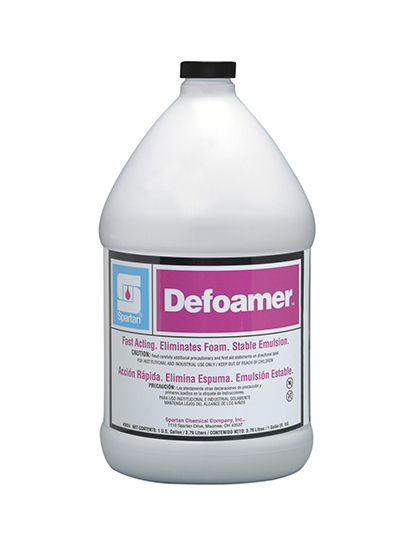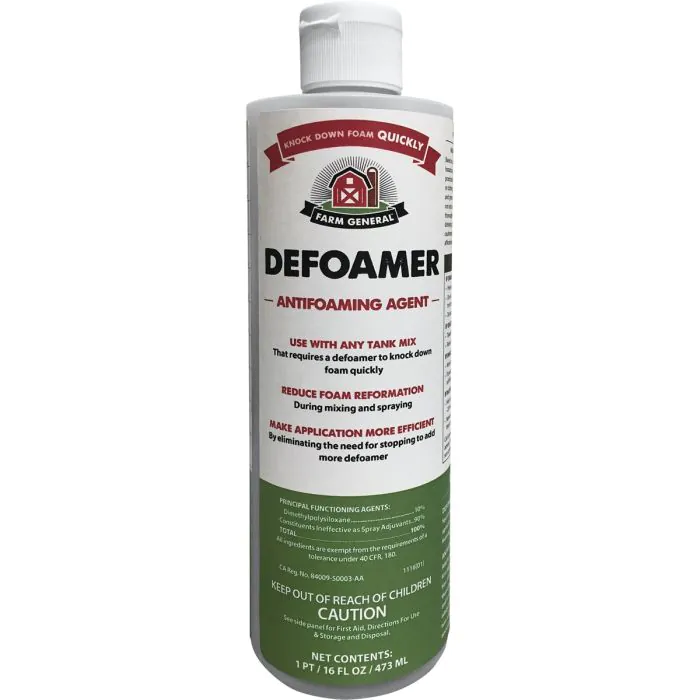Popular Uses of Chemical Defoamer Across Various Sectors
Wiki Article
The Significance of Making Use Of a Chemical Defoamer in Various Applications
The application of chemical defoamers is a necessary consideration throughout multiple sectors, consisting of food handling, wastewater treatment, and drugs. These representatives play an essential function in mitigating foam formation, which can hinder performance and concession item top quality.Understanding Foam Formation
Foam formation is a complex physical phenomenon that happens when gas bubbles are caught within a fluid matrix, causing the creation of a secure framework. This process can be influenced by numerous aspects, including the viscosity of the liquid, the surface area tension at the gas-liquid interface, and the existence of surfactants. Surfactants lower the surface tension, advertising bubble development and stabilization, which often results in the formation of foam in numerous industrial procedures.Foams are commonly run into in applications such as food production, wastewater treatment, and chemical production. In these contexts, foam can work as an insulator, hinder blending procedures, or prevent the efficiency of devices. The security of foam is established by the equilibrium between the pressures acting to support the bubbles and those that advertise their collapse.
Comprehending the technicians of foam formation is crucial for successfully handling its visibility in numerous systems. By understanding the underlying principles, industries can devise approaches to minimize unwanted frothing, thus enhancing operational efficiency and item high quality. This fundamental expertise works as a precursor to checking out the energy of chemical defoamers, which specifically deal with foam-related challenges in numerous applications.
Advantages of Chemical Defoamers
Chemical defoamers offer substantial advantages throughout different industries by effectively minimizing and regulating foam development. Among the primary advantages is improved operational effectiveness. By reducing foam, chemical defoamers aid maintain ideal production rates and lower downtime related to foam management. This is particularly essential in processes where too much foam can restrain machinery or interrupt workflows.In addition, chemical defoamers add to boosted item quality. Lathering frequently results in incongruities in formulas, which can negatively impact the final item. By controlling foam degrees, defoamers make sure harmony, therefore boosting the total quality of the result.
Cost-effectiveness is one more noteworthy benefit (Chemical Defoamer). By reducing the amount of resources required for production and reducing waste, chemical defoamers can lead to considerable financial savings. Moreover, they frequently enable lowered energy usage, as processes can run a lot more efficiently and need less intervention.
Applications in Food Handling
In the food processing sector, efficient monitoring of foam is necessary to make certain both item top quality and functional efficiency. Foam can disrupt various processes, from mixing and blending to product packaging, leading to minimized returns and prospective contamination. Chemical defoamers play a crucial function in minimizing these issues by rapidly breaking down foam, allowing for smoother procedures and boosted item consistency.In applications such as dairy products handling, defoamers avoid excess foam development during the manufacturing of cheese, yogurt, and milk, which can disrupt equipment and influence the texture of the end product. Similarly, in brewing and fermentation processes, foam control is crucial to preserve the honesty of the beverage and ensure optimum fermentation rates.
Additionally, chemical defoamers are used in food sauces, dressings, and emulsions to enhance the stability and appearance of the website link end products. By decreasing foam throughout manufacturing, makers can attain much better mixing and diffusion of components, resulting in premium high quality. Generally, the incorporation of chemical defoamers in food handling is crucial for keeping efficiency, high quality, and safety in food manufacturing.
Duty in Wastewater Treatment
Effective foam monitoring is similarly essential in wastewater therapy processes, where extreme foam can hinder procedures and make complex the treatment of effluents. In many wastewater treatment facilities, foam can develop as an outcome of organic activity, surfactants, or other organic materials present in the influent. This foam can bring about a series of operational obstacles, including decreased treatment efficiency, raised maintenance requirements, and potential regulative compliance problems.Chemical defoamers play an essential duty in mitigating these difficulties. By minimizing the surface area stress of the liquid, defoamers advertise the collapse of foam frameworks, thus promoting smoother operation of tools such as oygenation tanks and clarifiers. Their timely application assists preserve optimal hydraulic conditions, boosting the general performance of solids separation procedures.

Influence On Drug Manufacturing
Foam control is important in pharmaceutical manufacturing, where the visibility of too much foam can interfere discover here with producing procedures and concession item high quality (Chemical Defoamer). The development of foam throughout numerous stages, such as mixing, mixing, and fermentation, can bring about inefficient mixing, inadequate warm transfer, and even equipment damages. These problems not just result in functional delays yet can likewise trigger substantial economic losses and impact conformity with rigid regulative requirementsChemical defoamers are specifically formulated to mitigate these challenges. By efficiently reducing foam formation, they boost process efficiency and preserve the stability of the last item. In specific, defoamers make sure regular dosage types, boost the security of emulsions and suspensions, and enhance cleansing procedures by stopping foam accumulation in tools.
Furthermore, the usage of defoamers can optimize the return of energetic pharmaceutical ingredients (APIs) by advertising better removal and purification procedures. As pharmaceutical firms strive to enhance product quality while lessening manufacturing costs, the function of chemical defoamers ends up being significantly essential - Chemical Defoamer. Their unification right into making procedures not only sustains compliance with Excellent Production Practices (GMP) however likewise promotes innovation and competition in a quickly progressing industry

Verdict

Chemical defoamers supply substantial benefits across various sectors by more properly controlling and decreasing foam formation. By minimizing foam, chemical defoamers assist keep optimal manufacturing prices and reduce downtime linked with foam management. Chemical defoamers play an important duty in alleviating these concerns by promptly breaking down foam, allowing for smoother operations and boosted product consistency.
Reliable foam monitoring is similarly essential in wastewater therapy procedures, where extreme foam can prevent operations and complicate the therapy of effluents.Foam control is essential in pharmaceutical production, where the presence of extreme foam can interrupt making processes and concession item high quality.
Report this wiki page